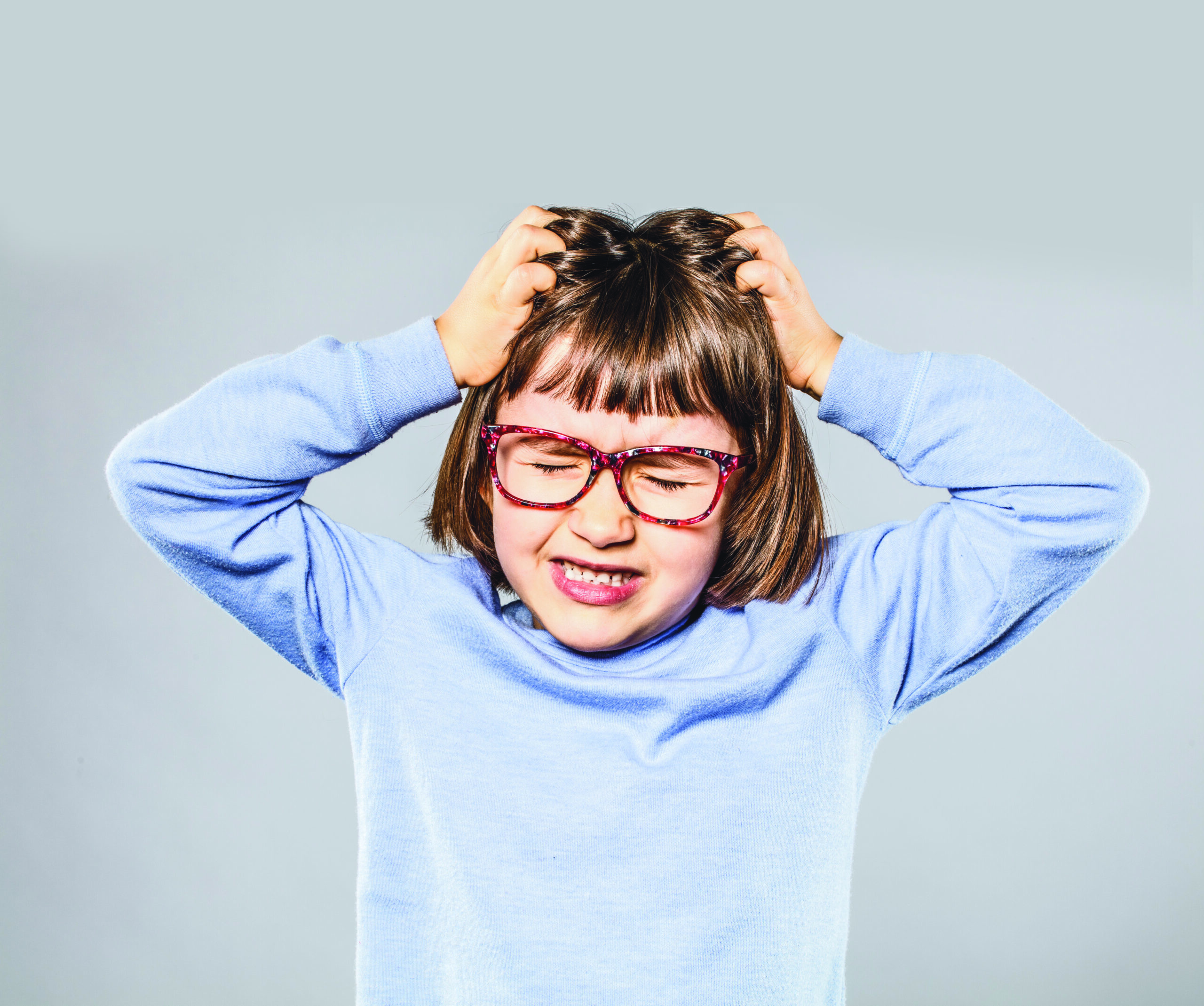As discussions and preparations continue for the return to normal school and crèche routines, the perennial problem of head lice will inevitably surface to worry and inconvenience parents and children
Head lice, while not dangerous or hazardous in themselves, are a yearly source of worry, inconvenience and embarrassment for children and parents/carers alike. With spring approaching and ongoing preparations for a return to the regular routine for schools and crèches, parents and carers will once again be dreading the inevitable notification that there has been an outbreak of head lice in their facility and asking that the proper steps are taken to limit the spread of these unwelcome parasites.
The Irish Pharmacy Union has stated that at any given time, one-in-10 children will acquire head lice and 80 per cent of infestations occur in children between the ages of four and 16 years. The Union also advised that early detection and treatment are important and urged that parents and carers consult their pharmacist on the best treatment options, particularly for children suffering from asthma, allergies or those with a pre-existing skin condition. This cohort of children are the ones most likely to suffer an adverse reaction to a head lice infestation.
Detection
Head lice are unsightly grey or brown insects that are 1-to-3mm long and live close to the scalp on human heads. They lay eggs that are ‘glued’ to the hair, often near the root, and the nits left behind can be brown, yellow or white. While itching can be present with an infestation, parents should be advised that only one-in-three children with head lice will experience an itch. Pharmacists can also advise on the best fine-tooth or ‘detection’ comb to use if there is a suspected case of head lice in the family.
The HSE advises that the best way to detect head lice is to perform a weekly check with a detection comb. The procedure that parents should follow is outlined in Figure 1. If head lice are detected, the Executive recommends checking other family members to establish whether they have also been affected and advising the parents of other children they may have been in close contact with, so that they can perform similar checks.
Spread
Head lice have the ability to spread in several different ways and it is important to emphasise with parents that the spread of head lice is not a reflection on their hygiene habits. Head-to-head contact is the most frequent way that head lice spread from person-to-person. This makes it difficult to curtail the spread of head lice, as close contact is so common between children, especially those of pre-school age, although older children are also at risk because of the proliferation of ‘selfies’ taken with mobile phones.
There are, however, less-frequent ways to spread the parasites, including:
- Lying on a bed, sofa, carpet or pillow that has recently been in contact with an infected person.
- Sharing clothes, such as hats, scarves or coats.
- Sharing articles, such as combs, brushes, towels or cuddly toys.
The HSE advises that the best way to detect head lice is to perform a weekly check with a detection comb
Treatment
Head lice should be eradicated as soon as they have been identified and other members of the household should be checked on the same day and treated, if necessary. Wet-combing with lots of conditioner on days 1, 5, 9 and 13 may dispose of newly-hatched lice, however if this is not practical, the pharmacist can advise on the best type of over-the-counter treatment to kill head lice in all types of hair and treated head lice should typically die within one day.
While products containing malathion and dimeticone have been traditionally used to treat infestations, clinical studies have concluded that dimeticone has superior efficacy in eradicating head lice. One such randomised, controlled, assessor-blind study compared dimeticone 4% to malathion 0.5% and the authors stated: “We concluded that, although malathion liquid is still effective for some people, dimeticone lotion offers a significantly more effective alternative treatment for most people.”
Products and treatments that can be recommended to parents and carers include:
The Hedrin range. This includes Hedrin Once, which takes 15 minutes to use effectively; Hedrin Protect and Go, which is a conditioning spray to protect against infestations; and Hedrin Treat and Go, which is suitable for children who have difficulty sitting still during treatment.
Lyclear Treatment Shampoo with Comb, which is suitable for adults and children over two years old and can be used by pregnant and breastfeeding women; and Lyclear Spray and Comb, which suffocates and dehydrates lice and eggs (age-restricted product, 18 years and over).
Vamoose Head Lice Treatment Mousse, which is oil-free and kills lice and eggs within 15 minutes.
A range of combs, including Nitty Gritty, Acu-Life Nit Comb, and Safe & Sound Nit Comb.
The HSE advises that the best way to treat head lice is by using a medicated lotion.2 There is a lack of clinical evidence for ‘natural’ head lice treatments such as eucalyptus oil, tea tree oil, or tocopheryl acetate, and their method of action is unclear.
For more information on the method of action and specific chemical compounds of any of those listed above, please consult the individual product’s SPC.
- Wash the hair with ordinary shampoo.
- Apply lots of conditioner and comb it through with an ordinary comb. This makes lice wet, which keeps them still.
- Put the teeth of the detection comb into the hair at the roots and comb down to the ends.
- Work through the hair, section by section, checking the comb each time.
- Rinse off the conditioner
- Repeat combing while hair is still wet
References
- Irish Pharmacy Union, ‘Back to School: Pharmacists’ Advice on Treating Head Lice’, press release, Aug 2018.
- HSE, ‘Head Lice in Young Children’, https://www2.hse.ie/conditions/child-health/head-lice-in-young-children.html, accessed Jan 2021.
- Centres for Disease Control and Prevention, ‘Head Lice: FAQs’. https://www.cdc.gov/parasites/lice/head/gen_info/faqs.html, accessed Jan 2021.
- NHS, ‘Head Lice and Nits’. https://www.nhs.uk/conditions/head-lice-and-nits/, accessed Jan 2021.
- Randomised, controlled, assessor blind trial comparing 4% dimeticone lotion with 0.5% malathion liquid for head louse infestation. PLoS One. 2007 Nov 7;2(11):e1127. doi: 10.1371/journal.pone.0001127.
- ‘Head Lice’, BMJ Clin Evid, v.2015; 2015, PMC4294162.







